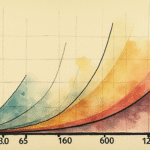Background and Context
On January 29, a tragic accident occurred near the Ronald Reagan Washington National Airport when a U.S. military Sikorsky Black Hawk helicopter collided with a Bombardier CRJ700 operated by American Airlines’ regional affiliate. The incident resulted in the unfortunate loss of 67 lives.
Jennifer Homendy, the director of the National Transportation Safety Board (NTSB), highlighted significant discrepancies in altitude readings from the helicopter’s instruments during recent investigative hearings. These discrepancies, ranging from 24 to 40 meters, have raised concerns about the accuracy of the helicopter’s altitude indicators.
Key Findings from the Investigation
During the hearings, it was revealed that three Sikorsky Black Hawk Lima helicopters from the same battalion were tested as part of the investigation. These tests also exposed discrepancies between radar altitude readings and barometric altitude indicators.
- Controlled Environment Testing: In a controlled setting, the discrepancy remained within acceptable limits. However, once the rotors began spinning, barometric readings dropped significantly and remained low throughout the flight.
- Discrepancy Range: The difference between the radar altitude and barometric altitude readings ranged from 24 to 40 meters.
- Concerns Raised: Marie Moler, one of the investigators, expressed concern that what the crew perceived might have been considerably different from the actual altitude.
Implications and Next Steps
The revelation of these discrepancies has prompted the NTSB to further examine the helicopter’s instruments and their accuracy. The investigation aims to determine if these inconsistencies played a role in the fatal collision and whether similar issues could affect other military helicopters.
As the NTSB continues its investigation, it is crucial to understand how these instrument discrepancies might impact helicopter operations and safety. The findings from this investigation could lead to potential upgrades or modifications in helicopter design and instrumentation.
Key Questions and Answers
- Q: What was the cause of the helicopter-plane collision? A: The investigation is ongoing, and the exact cause has not been determined yet. Instrument discrepancies have been identified as a key area of focus.
- Q: How many lives were lost in the accident? A: Sadly, 67 people perished in the collision.
- Q: What types of helicopters were involved in the investigation? A: The investigation included Sikorsky Black Hawk Lima helicopters from the same battalon as the one involved in the accident.
- Q: What is the range of discrepancies found in the helicopter’s altitude instruments? A: The discrepancies ranged from 24 to 40 meters between radar altitude readings and barometric altitude indicators.
- Q: What are the next steps in the investigation? A: The NTSB will continue examining helicopter instruments and their accuracy to determine if these discrepancies played a role in the collision.






